Sarah Sundin's Blog, page 458
October 10, 2012
Today in World War II History
70 Years Ago—Oct. 10, 1942: New song in Top Ten: “He’s My Guy.”
Published on October 10, 2012 03:00
October 9, 2012
Today in World War II History
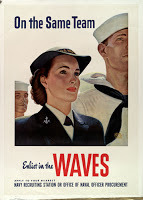 70 Years Ago—Oct. 9, 1942: US Eighth Air Force bombs Lille, France in its first mission with B-24 Liberators, first mission over 100 bombers, and the first mission for the 306th Bomb Group. First WAVES enlisted schools open at Stillwater OK (yeoman), Bloomington IN (storekeeper), Madison WI (radioman).
70 Years Ago—Oct. 9, 1942: US Eighth Air Force bombs Lille, France in its first mission with B-24 Liberators, first mission over 100 bombers, and the first mission for the 306th Bomb Group. First WAVES enlisted schools open at Stillwater OK (yeoman), Bloomington IN (storekeeper), Madison WI (radioman).
Published on October 09, 2012 03:00
October 8, 2012
Army Nursing in World War II - Nursing Practice
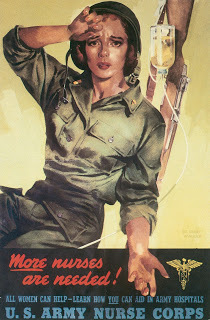 Since my new World War II novel,
With Every Letter
(Wings of the Nightingale book 1), features nurses, I'm conducting a blog series on Army Nursing during the war. Previous posts looked at requirements to serve in the Army Nurse Corps, training and rank, and uniforms. Today we'll look at general nursing practices.
Since my new World War II novel,
With Every Letter
(Wings of the Nightingale book 1), features nurses, I'm conducting a blog series on Army Nursing during the war. Previous posts looked at requirements to serve in the Army Nurse Corps, training and rank, and uniforms. Today we'll look at general nursing practices.The Ward
On the ward, the nurse was in charge, under the authority of the physician. She was assisted by male medics, enlisted men. In stateside hospitals, female Red Cross nurses’ aides also served. Physicians entered the Medical Corps with the rank of captain and only male physicians were admitted to the Corps.
As was typical in the 1940s, physicians expected unquestioning, speedy obedience from nurses. However, the war shook things up. The necessities of combat meant nurses were often asked to perform new tasks and given more authority, especially in combat zones. For example, flight nurses, were completely in charge during flight and had authorization to treat many medical emergencies. To learn more about WWII flight nursing, please see my guest posts on Redwood's Medical Edge.
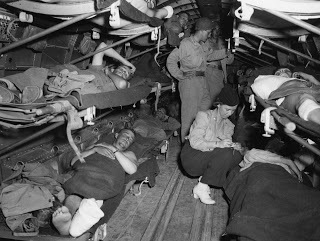 Flight nurse conducting air evacuation in Sicily, July 1943
Nursing Duties
Flight nurse conducting air evacuation in Sicily, July 1943
Nursing Duties
The nurse was responsible for keeping the ward properly heated and ventilated, and for cleanliness, orderliness, and quiet - often quite difficult in combat theaters. She and the medics changed linens and helped the patients bathe, shave, brush teeth, change clothes, and use the bedpan or urinal. They served food and helped the sicker patients eat. Alcohol rubs were given to relax patients and prevent bed sores.
Nurses took careful notes, stored by the bedside, to monitor patient health. TPR's (Temperature, Pulse, and Respiration) were recorded at regular intervals, at least twice daily. A glass mercury oral thermometer was used. Blood pressure was measured in certain patients as well.
Physicians relied on the nurse's assessment of patient symptoms - signs of bleeding or infection, weakness, restlessness, anxiety, coloring, mental condition, speech, condition of the eyes and tongue, appetite, bowel and urinary functions, coughing, and pain.
Nurses were vital members of the Operating Room team, and in combat theaters, they often learned to administer anesthesia, close wounds, and other tasks.
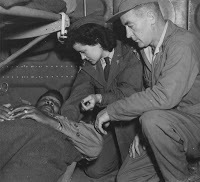 Medication Administration
Medication Administration
Medications were stored in the ward in a locked cabinet. The nurse was responsible for the key, but medics were allowed to access and administer medications in most instances. Nurses were trained to give medicine by mouth, hypodermic (now called subcutaneous), intramuscular, topical (on the skin), and by enema. Intravenous medications were to be given only under the direct supervision of a physician; however, exceptions were made in the combat theaters and for flight nurses.
This was long before our disposable, single-use, "universal precautions" era. Syringes were made of glass and were sterilized in bichloride of mercury before reuse. Gloves were washed and reused—and holes were even patched.Improvisation was the rule, especially in combat areas, and nurses used their creativity and imagination to turn trash into useful items. Sources: Tomblin, Barbara Brooks. G.I. Nightingales: the Army Nurse Corps in World War II. Lexington: University Press of Kentucky, 1996. (A wonderful history, including all theaters, full of personal stories).Technical Manual TM 8-220: Medical Department Soldier's Handbook. Washington DC: War Department, 5 March 1941. (The official Army handbook used by medics, which contains a lot of information on nursing duties).
Published on October 08, 2012 04:00
Today in World War II History
70 Years Ago—Oct. 8, 1942: Nazis order all Belgian males 18-50, females 21-35 to register for war work.
Published on October 08, 2012 03:00
October 7, 2012
Today in World War II History
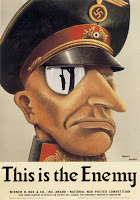 70 Years Ago—Oct. 7, 1942: US and UK announce creation of United Nations Commission to investigate war crimes. On Guadalcanal, Marines open offensive to expand perimeter at Henderson Field past artillery range. Bandleader Glenn Miller inducted into the US Army Air Forces.
70 Years Ago—Oct. 7, 1942: US and UK announce creation of United Nations Commission to investigate war crimes. On Guadalcanal, Marines open offensive to expand perimeter at Henderson Field past artillery range. Bandleader Glenn Miller inducted into the US Army Air Forces.
Published on October 07, 2012 03:00
October 6, 2012
Today in World War II History
70 Years Ago—Oct. 6, 1942: Second Protocol for US aid to USSR signed in Washington: 4 million tons promised through 7/1/43. German Army Group A takes oil city of Malgobek in Caucasus, Russia.
Published on October 06, 2012 03:00
October 5, 2012
Today in World War II History
70 Years Ago—Oct. 5, 1942: Himmler orders all Jews in concentration camps in Germany to Auschwitz or Majdanek. World Series—St. Louis Cardinals beat NY Yankees four games to one in Yankees’ first World Series defeat since 1926.
Published on October 05, 2012 03:00
October 4, 2012
Book Beat - Be Still My Soul by Joanne Bischof
 In
Be Still My Soul
by Joanne Bischof, we enter the Blue Ridge Mountains at the turn of the last century and meet shy Lonnie Sawyer, who longs to get away from her abusive home. But when handsome charmer Gideon O'Riley steals a kiss, Lonnie finds herself forced into a shotgun wedding. The only person less happy than Lonnie is Gideon. He takes his wife on a grueling march through the wilderness to find work - but they find far more than they expected.
In
Be Still My Soul
by Joanne Bischof, we enter the Blue Ridge Mountains at the turn of the last century and meet shy Lonnie Sawyer, who longs to get away from her abusive home. But when handsome charmer Gideon O'Riley steals a kiss, Lonnie finds herself forced into a shotgun wedding. The only person less happy than Lonnie is Gideon. He takes his wife on a grueling march through the wilderness to find work - but they find far more than they expected. This is such a moving debut novel. More than just a love story, Be Still My Soultakes compelling characters on a journey of redemption in the dangerous beauty of the Blue Ridge Mountains. Joanne Bischof’s masterful and compassionate insight into human nature won me over. On the surface, Gideon might be one of the most unlikeable heroes ever, but Joanne made me care about him and want him to find his way. That takes talent, and Joanne has it. I can’t wait for the second book in the Cadence of Grace series!
Joanne has also helped organize a fabulous event that I'm privileged to participate in - the Hope Chronicles. Five historical fiction authors (Regina Jennings, Joanne Bischof, Amanda Dykes, Karen Barnett, and I) are circulating a gorgeous journal made by Amanda. Each of our five heroines is contributing a journal entry. From November 5-9, we're having a blog hop featuring each journal entry and a prize bundle inspired by our heroine. The grand prize at the end of the week is the journal with our handwritten entries. You can learn more about the Hope Chronicles, see the individual prize bundles, and enter the contest on the Hope Chronicles event page.

Published on October 04, 2012 04:00
Today in World War II History
70 Years Ago—Oct. 4, 1942: British commando raid on Sark (Channel Islands) yields one German prisoner. Germans make fourth major offensive at Stalingrad, attack tractor factory.
Published on October 04, 2012 03:00
October 3, 2012
Today in World War II History
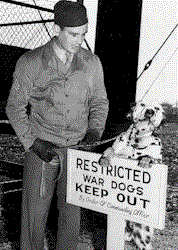 70 Years Ago—Oct. 3, 1942: In Stalingrad, Germans push Soviets back to Volga. War Dog Reception and Training Center established at Fort Robinson NE. Hollywood Canteen opens on Cahuenga Blvd., started by Bette Davis and John Garfield, with film stars entertaining and serving Allied troops.[image error]
70 Years Ago—Oct. 3, 1942: In Stalingrad, Germans push Soviets back to Volga. War Dog Reception and Training Center established at Fort Robinson NE. Hollywood Canteen opens on Cahuenga Blvd., started by Bette Davis and John Garfield, with film stars entertaining and serving Allied troops.[image error]
Published on October 03, 2012 03:00



